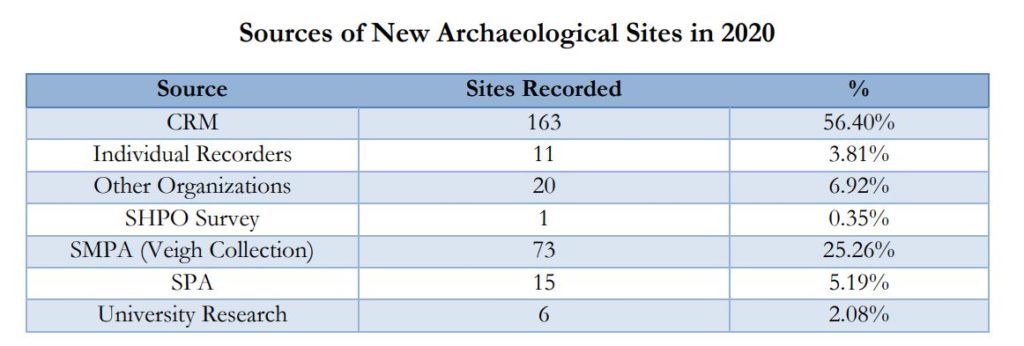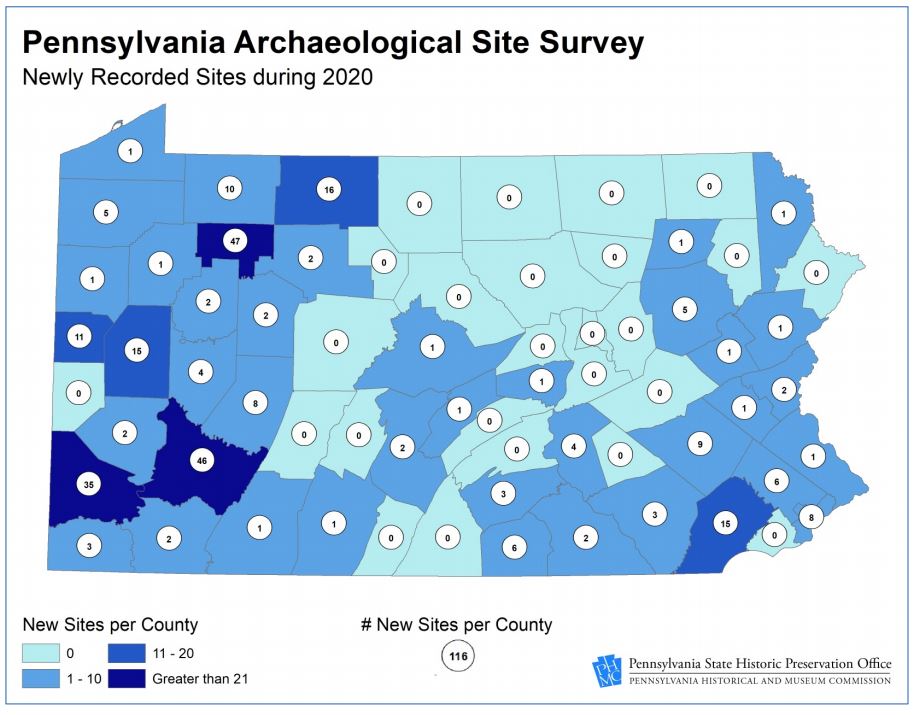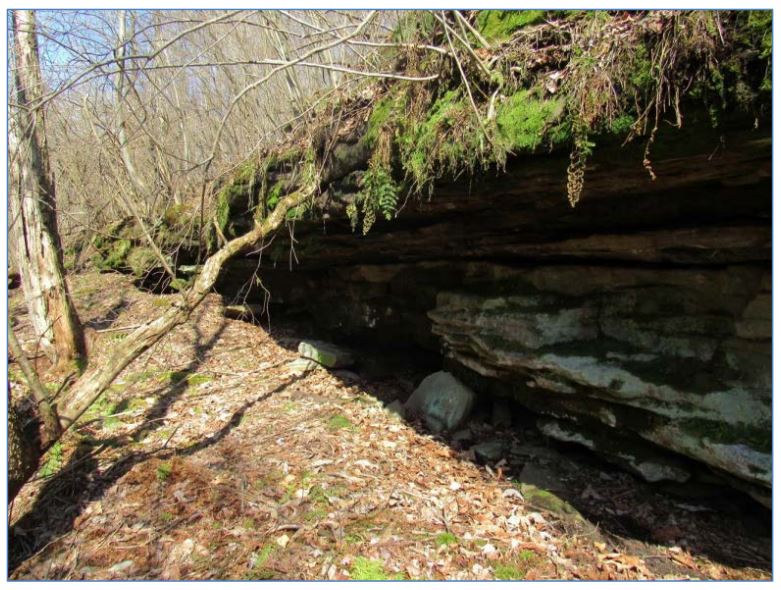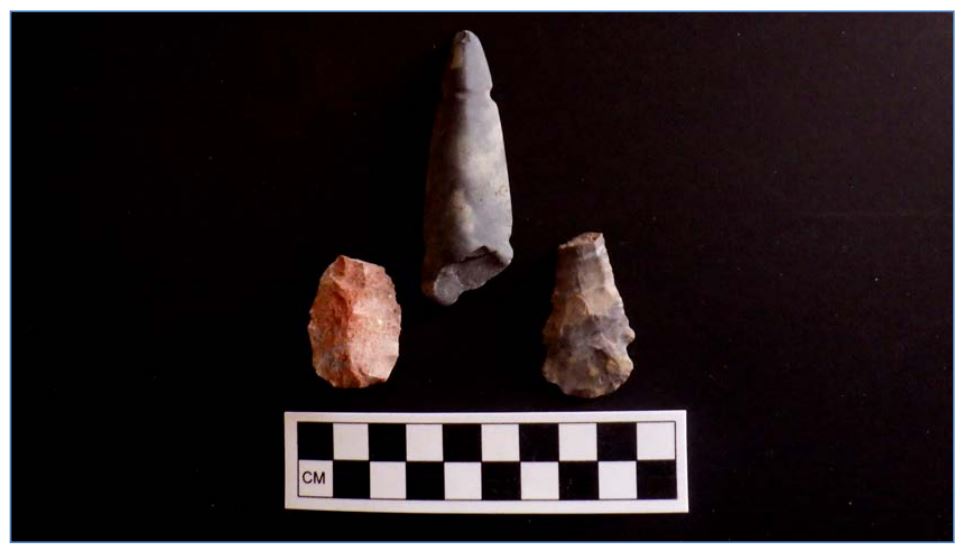For the past several years, PA SHPO archaeologists have issued an annual report – known as the PASS Report – detailing the ongoing efforts to record Pennsylvania’s archaeological sites.
Despite 2020’s many challenges, over 280 new archaeological sites were recorded thanks to cultural resource management (CRM) projects and continued contributions from independent research projects, members of the Society for Pennsylvania Archaeology (SPA), and long-time avocational archaeologists.
2020 Statistics
Here is a breakdown of the 2020 activity for the Pennsylvania Archaeological Site Survey (PASS). You can take a look at the 2020 PASS Report for more detail.
In 2020, 289 new sites were recorded. This brings the statewide total to 26,023 recorded sites across Pennsylvania. Here is how that breaks down by source of recordation:

CRM (Cultural Resource Management) projects provided over half of the recorded sites last year. The State Museum’s continued processing of the Veigh Collection is responsible for about a quarter of all newly recorded sites.
Of Pennsylvania’s 67 counties, 42 had at least one newly recorded site. Eight of those 42 counties – Forest, Westmoreland, Washington, McKean, Butler, Chester, Lawrence and Warren – had 10 or more sites added. In addition to this map, you can find the list of counties and number of new sites in the PASS report on PHMC’s website.

2020 Stories
In addition to numbers and statistics, the 2020 report includes highlights for notable projects that contributed to the 2020 PASS files. This year, five guest contributors provided interesting articles for the report and their projects represent work that was completed over many years.
Research in the Buffalo Creek Drainage in Butler, Armstrong, and Allegheny Counties, Tom Rabbitt, SPA Chapter #22, Ohio Valley.
Buffalo Creek is the largest drainage on the west side of the Allegheny River from French Creek to the Ohio River in Pittsburgh yet not well documented in archaeological maps or literature. Toms’ project has been to put the Upper Buffalo Creek Drainage and its multitude of resources like rock shelters, open sites, and petroglyphs into the archaeological record.

South Mountain Prehistoric Rhyolite Quarrying Project, Paul Marr, Department of Geography-Earth Science, Shippensburg University.
This project is a continuation and expansion of a South Mountain Partnership mini-grant awarded Paul Marr (SU) and John Wah (Matapeake Soils) in 2016 to map and document prehistoric rhyolite quarries on South Mountain using modern mapping techniques involving LiDAR-based terrain modeling and geophysical field testing. The South Mountain quarries were a very important source of lithic raw materials that were used throughout the Mid-Atlantic.
Sand and Gravel Quarry Project, Lawrence County, Thomas R. Baker, Thomas R. Baker, Archaeological Consultant.
A Phase I Survey was completed for a proposed sand and gravel quarry operation project located in Lawrence County. A large block area of about 250 acres was surveyed and resulted in the recordation of 11 previously unrecorded sites and the relocation of one previously recorded site, ranging in age from Paleoindian through the Historic periods.
Site Recording in Northwestern Pennsylvania, Andrew J. Myers, Allegheny National Forest, Marienville Ranger District.
Andrew added a number of new sites to the PASS files such as the Leonhart Mound (36WA0688) in Warren County, Indian Camp Run Spring No. 2 (36FO0367) and the former historic lumber-era village of Newtown (36FO0386) in Forest County, and the Dutch Hill Rockshelter (36JE0132) and Och’s-Reynold’s Site (36JE0199) in Jefferson County.

PASS Site Data Entry Internship, Luke Nicosia, Dickinson College, ’21.
Luke’s work consisted of entering site data for approximately 200 loci across southwestern Pennsylvania, many of which represent sites that were never recorded, into the PASS files. His contribution is an inside look at the value of the PHMC internship programs in helping students understand the complexities of professions they are seeking to enter.
Leave a Reply